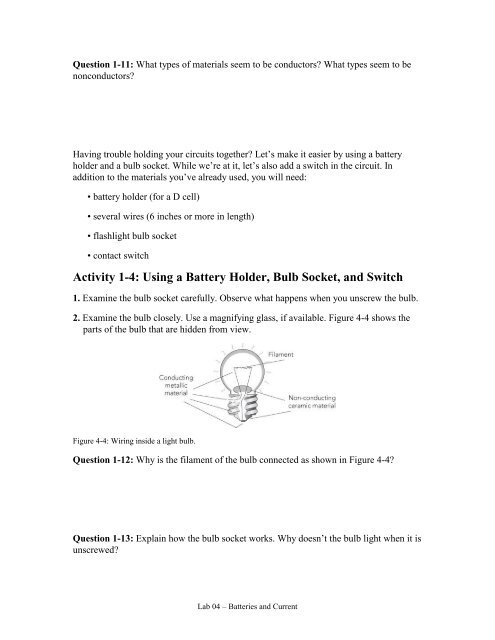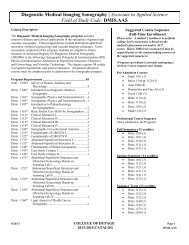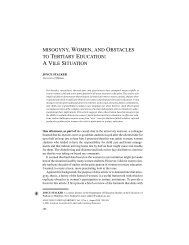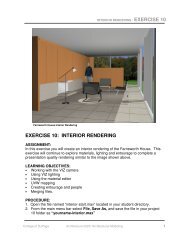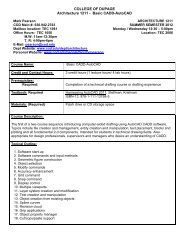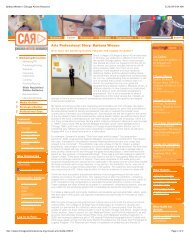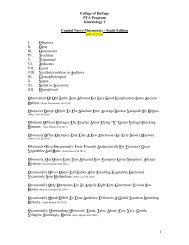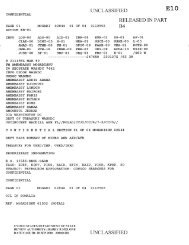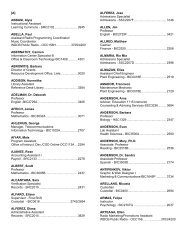pre-lab preparation sheet for lab 4—batteries, bulbs, and current
pre-lab preparation sheet for lab 4—batteries, bulbs, and current
pre-lab preparation sheet for lab 4—batteries, bulbs, and current
Create successful ePaper yourself
Turn your PDF publications into a flip-book with our unique Google optimized e-Paper software.
Question 1-11: What types of materials seem to be conductors? What types seem to be<br />
nonconductors?<br />
Having trouble holding your circuits together? Let’s make it easier by using a battery<br />
holder <strong>and</strong> a bulb socket. While we’re at it, let’s also add a switch in the circuit. In<br />
addition to the materials you’ve already used, you will need:<br />
• battery holder (<strong>for</strong> a D cell)<br />
• several wires (6 inches or more in length)<br />
• flashlight bulb socket<br />
• contact switch<br />
Activity 1-4: Using a Battery Holder, Bulb Socket, <strong>and</strong> Switch<br />
1. Examine the bulb socket carefully. Observe what happens when you unscrew the bulb.<br />
2. Examine the bulb closely. Use a magnifying glass, if avai<strong>lab</strong>le. Figure 4-4 shows the<br />
parts of the bulb that are hidden from view.<br />
Figure 4-4: Wiring inside a light bulb.<br />
Question 1-12: Why is the filament of the bulb connected as shown in Figure 4-4?<br />
Question 1-13: Explain how the bulb socket works. Why doesn’t the bulb light when it is<br />
unscrewed?<br />
Lab 04 – Batteries <strong>and</strong> Current


